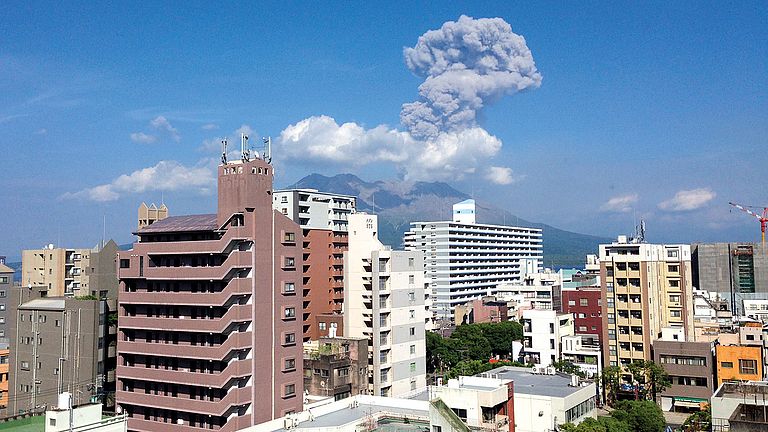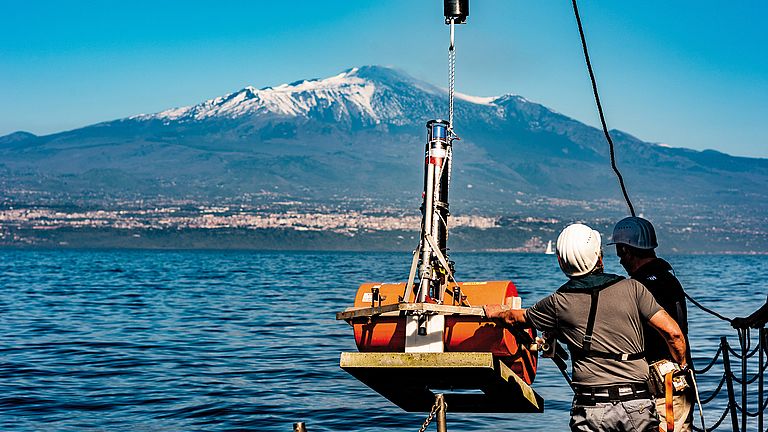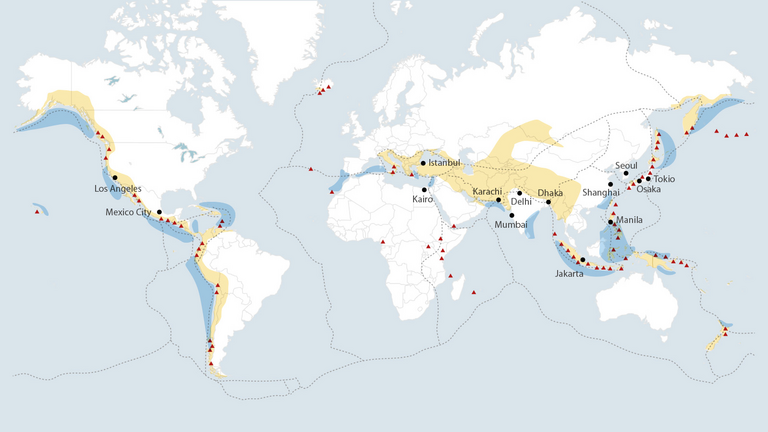Prof. Dr. Christian Berndt
Deputy Speaker Topic 3
cberndt(at)geomar.de
Topic 3: Restless Earth – Towards Forecasting Geohazards
The Earth as a powder keg - Where do we have to expect geological hazards and when? Extreme events such as the earthquakes in Indonesia in 2004 or Japan in 2011 with the subsequent tsunamis impressively demonstrate the danger and also the global impact of such natural disasters. We cannot prevent them, but can we manage to better protect people from the effects of such events through a better understanding of the Earth system?
Earthquakes, volcanic eruptions and tsunamis - in Germany we hardly need to fear such natural hazards; only in a few regions relatively weak earthquakes do occur from time to time. Although the volcanoes in the Eifel are not yet officially considered extinct, the current risk in this region is very low. And the shallow North Sea would very much mitigate a tsunami coming up from the Atlantic Ocean until it reaches the coasts. Here, storm surges are the much more immediate natural hazard. Nevertheless, geological hazards are a constant and often fatal threat for many people, especially in coastal regions. The coasts around the Pacific Ocean, but also many areas in the Mediterranean and Indian Ocean are particularly at risk.
This sets the framework for topic 3 in the current POF programme "Changing Earth - Sustaining our Future". Under the title: "Living on a Restless Earth: Towards Forecasting Geohazards", scientists from the German Research Centre for Geosciences (GFZ) in Potsdam and GEOMAR will, over the next seven years, try to learn more about the processes associated with geohazards in order to better protect people from them in the future. The topic is coordinated by the GFZ, with GEOMAR primarily conducting the research in the marine sector.
The task of the topic is to develop the next generation of observation systems and an interpretation and modelling framework to provide robust and innovative methods for long-term hazard assessment and short-term prediction of the most threatening geohazards. The starting point of research in this area is to understand why and where geohazards occur. This requires to study fundamental processes and interactions between components in the Earth's system and furthermore the investigation of changes over different temporal and spatial scales. This requires extensive observation data, both on land and in the ocean. Ultimately, the aim is to find out whether there are precursors by which geohazards can be reliably detected and then integrated into warning systems and time-dependent hazard assessments. In addition, model studies will be used to better characterise and understand past and present events. The ultimate goal is better risk assessments of endangered regions.
More about Topic 3 on the webpages of the Helmholtz Research Field Earth and Environment





